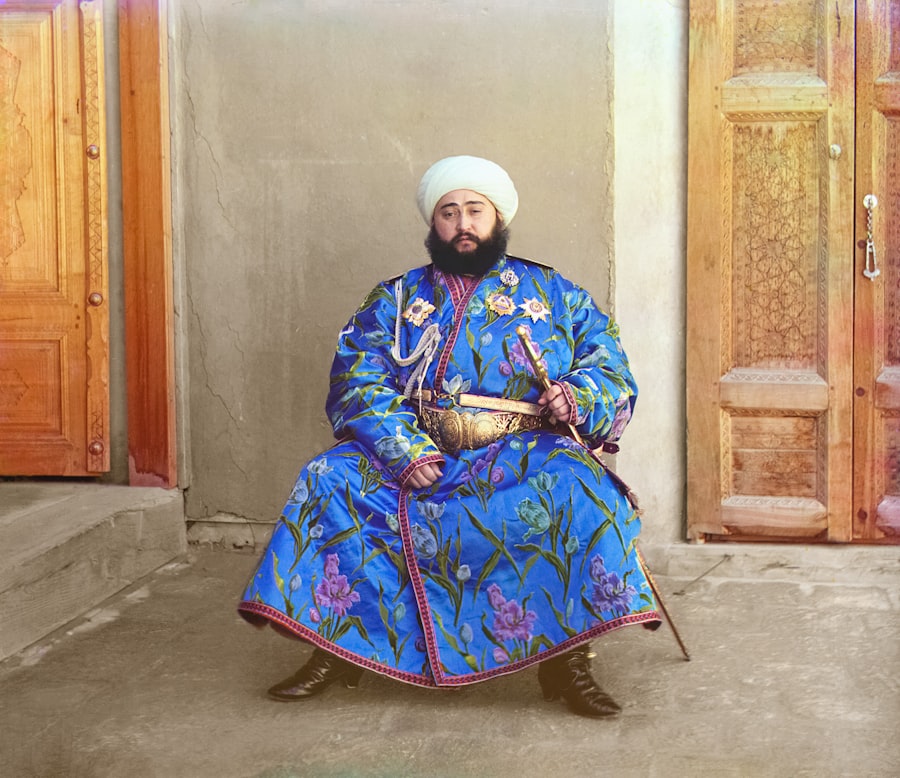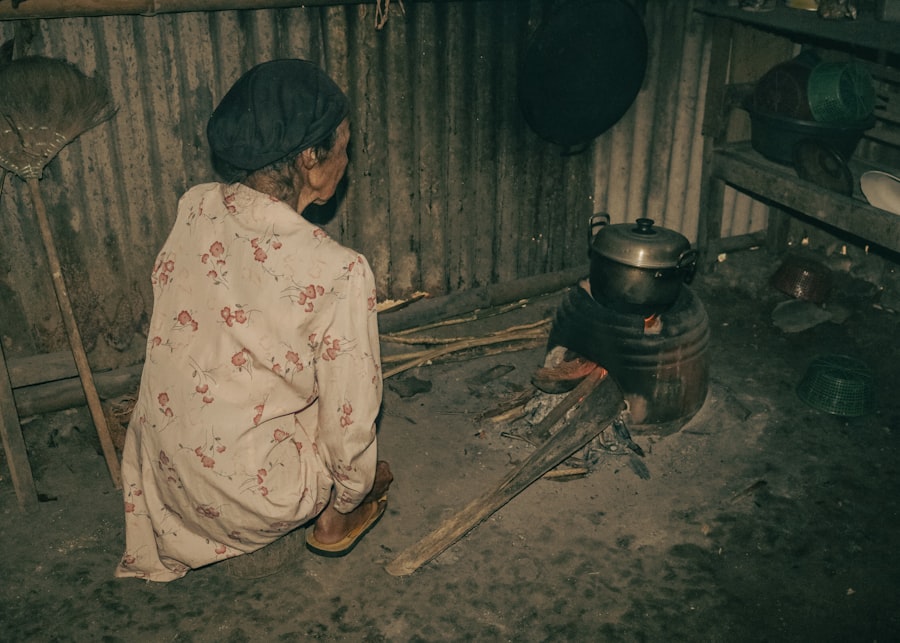The capture of Saddam Hussein on December 13, 2003, marked a pivotal moment in the history of Iraq and the broader Middle East. After months of intense military operations following the U.S.-led invasion of Iraq, the former president was found hiding in a small underground hideout near his hometown of Tikrit. The operation, dubbed “Operation Red Dawn,” involved a combination of intelligence gathering and ground forces, culminating in the dramatic moment when U.S.
troops discovered Hussein, who was unarmed and offered little resistance. This event not only symbolized the end of his tyrannical rule but also served as a significant turning point in the ongoing conflict in Iraq. The capture was met with a mixture of jubilation and skepticism.
For many Iraqis, it represented a long-awaited victory over a dictator who had ruled with an iron fist for over three decades. However, others questioned whether his capture would lead to stability or merely exacerbate the existing chaos. The images of Hussein’s disheveled appearance during his capture were broadcast worldwide, serving as a stark reminder of the fallibility of even the most powerful leaders.
As news spread, it became clear that this event would have far-reaching implications for Iraq and the entire region.
Key Takeaways
- Saddam Hussein was captured by US forces in December 2003, hiding in a hole near his hometown of Tikrit.
- The impact of Saddam’s capture on Iraq and the Middle East was significant, leading to a power vacuum and increased sectarian violence.
- Saddam Hussein’s reign of terror included brutal suppression of dissent, chemical attacks on Kurdish civilians, and the invasion of Kuwait.
- The hunt for Saddam Hussein involved extensive intelligence operations and a reward for information leading to his capture.
- The international community reacted with a mix of relief and concern over the implications of Saddam’s capture for the region.
The Impact on Iraq and the Middle East
In the immediate aftermath of Saddam Hussein’s capture, Iraq experienced a surge of hope among some citizens who believed that his removal would pave the way for a new era of democracy and peace. However, this optimism was short-lived as sectarian violence began to escalate. The power vacuum left by Hussein’s regime led to increased tensions between various ethnic and religious groups, particularly between Sunni and Shia Muslims.
The insurgency against U.S. forces intensified, and Iraq descended into a cycle of violence that would last for years. The impact of Hussein’s capture extended beyond Iraq’s borders, influencing regional dynamics in the Middle East.
Neighboring countries watched closely as the U.S. military presence in Iraq grew, fearing that instability could spill over into their own territories. The capture was seen by some as a validation of U.S.
interventionist policies, while others viewed it as an example of foreign meddling that could lead to further unrest. The geopolitical landscape shifted as nations recalibrated their strategies in response to the changing situation in Iraq.
Saddam Hussein’s Reign of Terror

Saddam Hussein’s reign was characterized by brutality and oppression, leaving an indelible mark on Iraqi society. His government employed widespread surveillance, censorship, and violence to maintain control over the population. Political dissent was met with severe punishment, including imprisonment, torture, and execution.
The infamous Al-Anfal campaign against the Kurdish population in the late 1980s exemplified his ruthless tactics, resulting in the deaths of thousands and the destruction of entire villages. Hussein’s regime also engaged in aggressive military actions, most notably the invasion of Kuwait in 1990, which led to the Gulf War and subsequent international sanctions. These actions not only devastated Iraq’s economy but also contributed to widespread suffering among its citizens.
The legacy of fear and repression created an environment where loyalty to the regime was often prioritized over national unity, leaving deep scars that would take years to heal.
The Hunt for Saddam Hussein
| Metrics | Data |
|---|---|
| Duration of the Hunt | 8 months |
| Number of Troops Involved | 600,000 |
| Cost of the Operation | 1 billion |
| Number of Tips Received | 50,000 |
| Number of Raids Conducted | 1,000 |
The hunt for Saddam Hussein became one of the most extensive manhunts in modern history. Following his ousting from power, U.S. forces launched a relentless search for the former dictator, employing advanced technology and intelligence networks to track him down.
Despite being one of the most wanted men in the world, Hussein managed to evade capture for several months, utilizing a network of loyalists and safe houses to remain hidden. The search for Hussein was not just a military operation; it became a symbol of justice for many who had suffered under his regime. As U.S.
forces combed through rural areas and urban centers alike, they faced numerous challenges, including misinformation and local resistance. The determination to find him underscored the broader goal of establishing security and stability in Iraq, even as the situation on the ground grew increasingly complex.
The Reaction of the International Community
The international community reacted with a mix of relief and skepticism following Saddam Hussein’s capture. Many world leaders hailed it as a significant step toward restoring peace in Iraq and promoting democracy in the region. However, there were also voices of caution that warned against premature celebrations.
Critics argued that capturing Hussein would not resolve the underlying issues plaguing Iraq, such as sectarian divisions and insurgency. Moreover, some nations expressed concern about the legality and morality of the U.S.-led invasion that led to Hussein’s downfall. Questions arose regarding the justification for military intervention and its long-term consequences for Iraq and its neighbors.
The capture ignited debates about sovereignty, human rights, and the role of foreign powers in shaping the political landscape of sovereign nations.
The Trial and Execution of Saddam Hussein

Saddam Hussein’s trial began in October 2005 and quickly became a focal point for both Iraqi citizens and the international community. Charged with crimes against humanity for his role in the mass killings and oppression during his rule, Hussein’s trial was marked by dramatic moments and intense media coverage. His defiance in court showcased his unwillingness to accept responsibility for his actions, further polarizing opinions about his legacy.
Ultimately, Hussein was found guilty and sentenced to death by hanging in November 2006. His execution on December 30 of that year was met with mixed reactions; while some celebrated it as justice served, others viewed it as a politically motivated act that could deepen divisions within Iraq. The trial and execution raised questions about accountability and reconciliation in a nation still grappling with the aftermath of decades of tyranny.
The Aftermath of Saddam Hussein’s Capture
The aftermath of Saddam Hussein’s capture was fraught with challenges as Iraq struggled to rebuild itself from years of war and oppression. While some hoped that his removal would usher in an era of peace, the reality proved to be far more complicated. Sectarian violence surged as various factions vied for power in a post-Hussein landscape, leading to widespread chaos and instability.
S.-led coalition faced mounting criticism as insurgent attacks increased, resulting in significant casualties among both military personnel and civilians. Efforts to establish a stable government were hampered by ongoing violence and political infighting. The initial euphoria surrounding Hussein’s capture quickly faded as it became evident that the road to recovery would be long and arduous.
Saddam Hussein’s Legacy
Saddam Hussein’s legacy is one marked by contradictions; he is remembered both as a tyrant who inflicted suffering on millions and as a figure who played a complex role in Middle Eastern politics.
Yet, some argue that he also provided a sense of stability during his rule, albeit through oppressive means.
The legacy of Hussein continues to influence contemporary discussions about governance, human rights, and international intervention. His life serves as a cautionary tale about the dangers of unchecked power and authoritarianism while also highlighting the complexities involved in dismantling such regimes. As Iraq continues to navigate its post-Hussein identity, the echoes of his rule remain palpable.
The End of an Era in Iraq
The capture and subsequent execution of Saddam Hussein signified not just the end of his reign but also marked a profound shift in Iraq’s historical trajectory. For many Iraqis, it represented a break from decades of oppression; however, it also ushered in an era fraught with uncertainty and conflict. The transition from dictatorship to democracy proved challenging as various factions struggled to find common ground amid rising sectarian tensions.
As Iraq sought to redefine itself without its former leader, questions arose about national identity and unity. The end of Hussein’s era did not automatically translate into peace or stability; rather, it opened up new avenues for conflict as different groups vied for power in a rapidly changing political landscape. The challenges faced by Iraq post-Hussein continue to shape its journey toward recovery.
The Future of Iraq without Saddam Hussein
Looking ahead, Iraq faces both opportunities and challenges in a post-Saddam landscape. The removal of his regime allowed for democratic processes to take root; however, these processes have been marred by corruption, violence, and political instability. As various factions continue to vie for power, there is an ongoing struggle to establish a cohesive national identity that transcends sectarian divides.
The future of Iraq hinges on its ability to foster inclusive governance that addresses the needs and aspirations of all its citizens. International support will play a crucial role in this endeavor; however, it must be balanced with respect for Iraqi sovereignty and self-determination. As Iraq navigates its path forward, lessons from its tumultuous past will undoubtedly inform its efforts toward building a more stable and prosperous future.
Lessons Learned from the Capture of Saddam Hussein
The capture of Saddam Hussein offers several critical lessons about governance, intervention, and accountability on both national and international levels. One key takeaway is the importance of understanding local dynamics when intervening in foreign conflicts; mere removal of a dictator does not guarantee stability or peace. The complexities inherent in Iraqi society highlight the need for nuanced approaches that consider historical grievances and cultural contexts.
Additionally, Hussein’s trial underscores the significance of accountability in post-conflict societies. While justice is essential for healing wounds inflicted by tyranny, it must be pursued alongside efforts to foster reconciliation among divided communities. Ultimately, the events surrounding Saddam Hussein’s capture serve as a reminder that true change requires more than just removing oppressive leaders; it necessitates building inclusive systems that empower citizens and promote lasting peace.
Saddam Hussein, the former President of Iraq, was captured on December 13, 2003, in a significant event that marked a turning point in the Iraq War. For those interested in learning more about historical events and intriguing facts, you might find the article on Hey Did You Know This to be a fascinating read. This website offers a variety of articles that delve into lesser-known historical details and interesting trivia, providing a broader context to major events like the capture of Saddam Hussein.
WATCH NOW! How the US Hunted and Captured Saddam Hussein: The Untold Story of Operation Red Dawn
FAQs
What day was Saddam Hussein captured?
Saddam Hussein was captured on December 13, 2003.
Where was Saddam Hussein captured?
Saddam Hussein was captured in a small underground hideout near his hometown of Tikrit, Iraq.
Who captured Saddam Hussein?
Saddam Hussein was captured by a joint operation of the United States military and the Iraqi police.
What were the circumstances of Saddam Hussein’s capture?
Saddam Hussein was found hiding in a small, underground hole on a farm near Tikrit. He was discovered without resistance and was taken into custody without any casualties.
